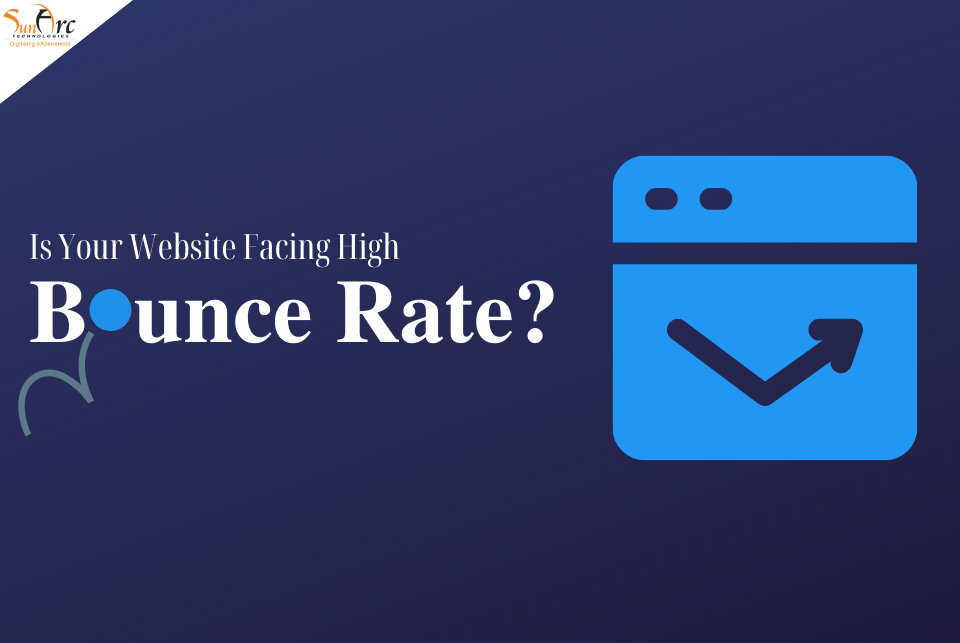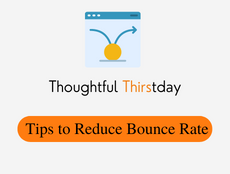Whenever you create a website, your main goal is to grab more and more visitors to your website. And when they come, you urge them to take the desired action. It might be subscribing to your newsletter, installing an app, purchasing your products, or filling out the contact information.
And when the visitors leave your website without taking any of the above actions, you will see a rise in bounce rate along with a sad face.

A high bounce rate may be detrimental to both SEO and conversions. And for a business, it’s a lost opportunity.
To promote your website more successfully and improve sales, you must first reduce the bounce rate of your website.
Let’s find out how to reduce the bounce rate of your website.
What is Bounce Rate?
The bounce rate is the percentage of single-page sessions with no user engagement. Visitors need not click the back button to be considered a bounce. Visitors can exit the session by closing their browser or walking away from the computer.
Google Analytics automatically estimates your bounce rate for specific pages and the entire domain. This data may be utilized to identify underperforming landing pages; based on that; you can prepare strategies to lower bounce rates.
What is a Good Bounce Rate?
However, there is no universal standard of a good or bad bounce rate, but as per the industry experts, lower bounce rates are considered the positive side of the website.
A good bounce rate depends on many factors like the Type of Website, Industry, user’s search intent, source of traffic, and device used for browsing.
Here are the Industry wise bounce rates:
| Industry | Bounce Rate |
| B2B | 75% |
| Telco | 56% |
| Beauty | 48% |
| Financial Services | 47% |
| Luxury | 46% |
| Automotive | 45% |
| Apparel | 44% |
| Consumer Electronics | 44% |
| Travel | 43% |
| Grocery | 40% |
| Energy | 38% |
How to Reduce Bounce Rate? Here are the Tips
1. Improve Page Load Time
Few things are more annoying than a website that takes forever to load. If you want to reduce your bounce rate, your website must load quickly. In recent years, Google has used page speed and user experience as ranking factors. If your page speed is faster, your SEO will be more effective. And this results in a better user experience and improved SERP rankings.
Tools like Google PagesSpeed Insights and GTmetrix may help you evaluate the load time of your website’s pages. Besides, you can discover which web pages are the fastest to load and how to speed up the website.
2. Use Visual Content
Visuals are the perfect approach to attract and retain the reader’s attention. Visuals do not prevent website traffic from being bounced, but they help draw the readers’ attention.
Appealing visuals have their positive sides, and if you add informative visual elements that show detailed data or stats, the reader might save those pictures. It’s an excellent approach to direct the client’s journey. Infographics and videos may also be shared, increasing the social media traffic to your website.
3. Perform A/B Testing
A/B testing enables you to continually optimize your website to provide a better user experience to visitors, enhance your conversion channel, and lower bounce rates. The primary elements to be focused on in A/B testing are landing pages, website layout, navigation menus, and call to action.
You can begin by examining pages having a high bounce rate. Create a hypothesis regarding the potential reasons. And then run A/B tests to validate your theory.
4. Create Intent-Based Content
To reduce bounce rates quickly and easily with your content, ensure that your content reflects the search intent of each keyword you are targeting.
Always remember that the reader does not want to land on your home page, service page, or product page whenever he clicks on Google’s search results. In such a situation, he should provide the same information or link he is searching for. So, always create content based on the user’s search intent. By doing this, he will not only appreciate your efforts but also bookmark your website and might subscribe to your newsletter.
5. Reduce Pop-ups
Pop-ups are a thoughtful approach to growing your email list and enhancing conversions. But on the other side, Pop-ups can ruin the user’s reading experience and cause him to leave your website.
To get over this, you can use exit intent pop-ups that only appear when a visitor is ready to depart your website. These pop-ups can retain users on your website without negatively affecting their experience.
Exit intent pop-ups encourage user involvement; it lowers bounce rates and allows you to expand your subscriber base.
6. Add Internal Links
The internal links on your website can take your readers to multiple pages of your website, and external links provide in-depth information to users. So adding both internal and external links provides users access to relevant and high-quality content, and the reader will spend more time on your website. Thus the bounce rate of your website can be significantly decreased by using these links.
To use internal links effectively, you can group (topic cluster) related topics together. Topic clusters are collections of related content or linked pages that include relevant information.
A topic is typically covered in great depth on the Pillar page. More information about subtopics is given on cluster pages than on the pillar page. A pillar link will take you to every cluster page and vice versa.
Conclusion
Every website owner once struggles with high bounce rates. And it has been seen quite often that after making efforts to reduce bounce rate, the website owner stops working on his website. And if you are also one of those users who are very nervous about the bounce rate of their website, then you do not need to worry anymore. All the tips to reduce bounce rates I have discussed will help you in the long run.
However, if you think you are still unable to cope with your competitors and facing high bounce rates, you can contact us. Our digital marketing professionals will let you know the necessary steps by auditing your website and assist you in boosting your website rankings by reducing bounce rates.

